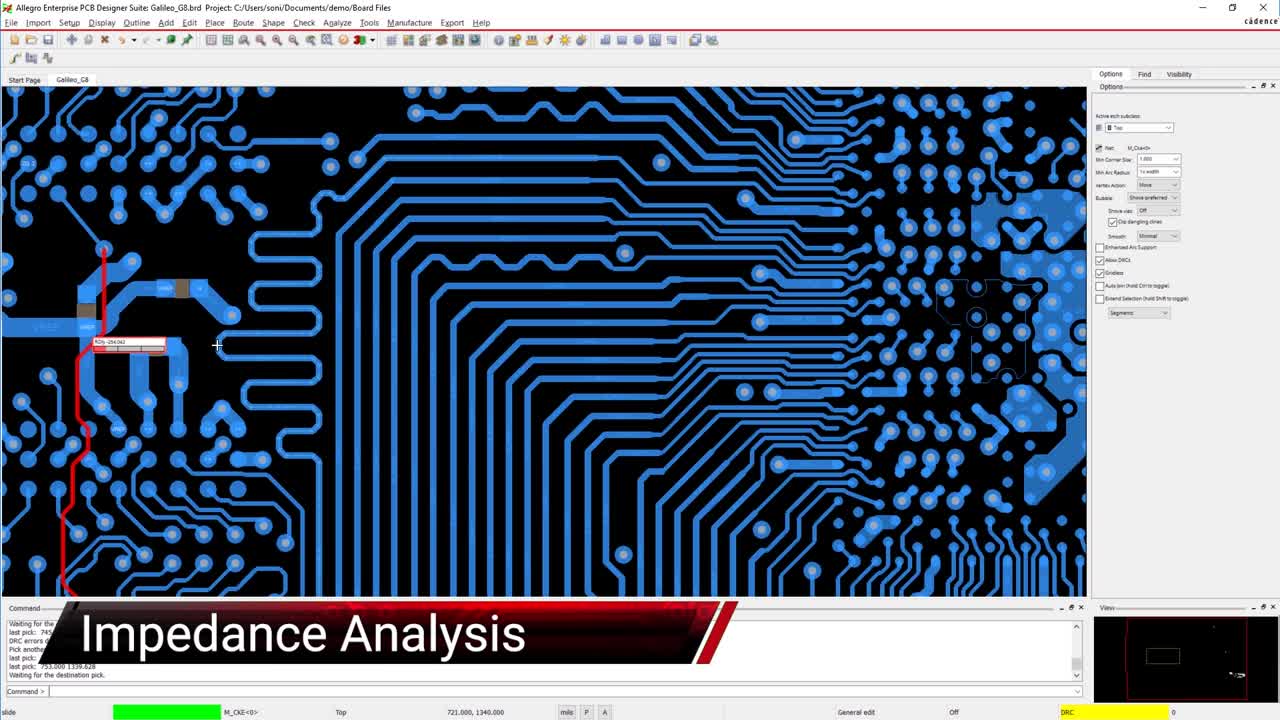Relating VSWR to Return Loss in PCB Design
Key Takeaways:
-
Learn the relationship between VSWR and return loss
-
Determine how to calculate the effect of VSWR on Return Loss
-
Understand the applications for the equation of VSWR on return loss in electronics
When creating PCB prototypes that conduct alternating current (AC) at radio frequency, designs must compensate for the effects of the current waves on the prototype material. Transmission lines often contain two different conductors to optimize current flow. Transmission lines are built for a range of AC voltages, and voltage can vary along transmission lines. Transmission lines employ monitoring metrics to keep current flowing well.
VSWR to return loss is an important metric in PCB design. The relationship is a good way to determine how well current is flowing through a device, and by extension how well the electronic is working. This article will provide a refresher on the concepts behind VSWR and return loss, then explore some special considerations about the VSWR to return loss ratio in PCB design.
What are VSWR and Return Loss?
Current through a transmission line should always flow forward through a conductor between connected devices. However, current waves are sometimes reflected backward through a conductor. The voltage ratio between the reverse wave and the forward wave is called the reflection coefficient. This coefficient is defined with the following equation.
Ideally, there should be no reverse wave, resulting in a reflection coefficient of 0, but this does not always happen in practice. The maximum and minimum voltages of a transmission line are defined in terms of the reflection coefficient.
Maximum Voltage: 1 + Absolute Value of Reflection Coefficient
Minimum Voltage: 1 – Absolute Value of Reflection Coefficient
The ratio between the absolute values of the maximum voltage and minimum voltage in a transmission line is called the voltage standing wave ratio, or VSWR. A low VSWR through a transmission line means that electronics are connected well and any disruptions in the current flow will be easier to find. VSWR is defined with the following equation.
Disruptions are found by measuring return loss, a reduction of power in the signal within a transmission line. In electronics, power is the product of the outgoing current and its voltage. A power reduction happens if a device connected to the transmission line does not consume the necessary current properly. Return loss is usually expressed as a ratio, in decibels, between the power which continues down a transmission line from a device (incident power) and the power which is reflected up the transmission line (reflected power). Put another way, return loss measures how much power is absorbed and used. Return loss is defined with the following equation.
Although many tables exist to convert between VSWR and return loss, it is also possible to convert between them using the following equation.
How do VSWR and Return Loss Affect PCB Design?
Transmission lines should have a low VSWR and a high return loss. This means the transmission line should conduct current well, but also make disruptions in the current easy to identify. Disruptions, more formally called mismatches, are detrimental to the function of PCB prototypes. If current does not flow properly through a device, and the VSWR to return loss ratio is larger, the performance of a device can be dramatically affected. The temperature of interface boundaries could increase, voltages to crucial parts of a device may change, and the failure of one device could impact an entire network.
The effective transfer of power should be as high as possible along a transmission line, but problems in the VSWR to return loss ratio caused by mismatches can reduce power quickly. This can result in significantly reduced signal strength and broadcast range. Monitoring the VSWR to return loss ratio is standard practice at radio stations and at any technological firm that works with radio broadcasts.
Adding matching transformers to a PCB prototype can protect the device from some sudden current spikes caused by mismatches or current flow problems. These transformers mitigate impedance, the amount of opposition to the flow of current through the PCB device. Wave reflection makes it more difficult for current to travel through a device since the reflected wave can partially cancel out the forward wave. It is also possible to handle impedance by using attenuators, which reduce the power of the current without distorting its waves and causing undesirable reflections.

Where Can I Find PCB Designs with a Proper VSWR to Return Loss Ratio?
PCB prototypes require careful monitoring of their VSWR to return loss ratio to ensure that they work as efficiently as possible. The mathematical formulas and tables of values can seem overwhelming to designers who just want to make a good product. But, it’s a mistake to ignore them, so many designers and engineers could use a little help from experts who can take the headache out of all the numbers.
If you’re looking for a suite of PCB design and analysis tools capable of managing VSWR to return loss in your designs, look no further than Cadence. With Allegro PCB Designer you can rest assured in a layout tool capable of providing and integrating the analytical, verification, and simulation functions necessary to move your design throughout production seamlessly.
If you’re looking to learn more about how Cadence has the solution for you, talk to us and our team of experts.